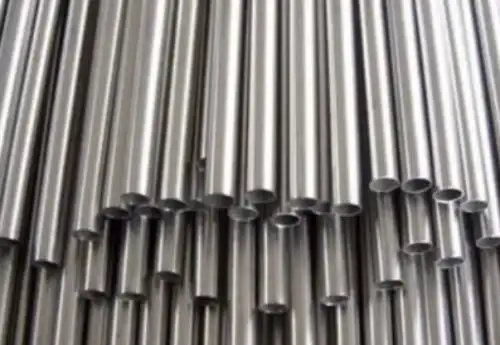Straightening is a very important part of the manufacturing and application process of titanium tubes. In order to obtain high quality titanium tubes, it is necessary to use appropriate straightening methods. This article will introduce several major methods of titanium tube straightening, including tension straightening, sinusoidal straightening and pressure straightening.

1. Tension straightening
Tension straightening is an effective method of straightening titanium tubes. By applying a vertical tension that exceeds the yield limit of the material, this method produces a plastic extension of the titanium tube, thus realizing the correction of its shape defects. In the tension straightening machine, a tensile stress is applied to the titanium tube with waveform defects, and this tensile stress is combined with the original residual stress of the titanium tube. In the parts of the titanium tube where the extension of the tube is larger, part of the tensile stress is canceled out, which reduces the actual deformation stress, and results in smaller plastic extension during straightening; while in the parts of the tube where the extension is smaller, the deformation stress is increased due to the accumulation of tensile stress, and the plasticity is widened when the straightening is carried out. As a result, all parts of the titanium tube can be uniformly extended under tension, thus eliminating waveform defects.
2. sinusoidal straightening
Sinusoidal straightening is another widely used method for straightening titanium tubes. This method is particularly suitable for bars and tubes with simple cross sections, such as titanium tubes and bars. Sinusoidal straightening is usually carried out in a skew roll straightening machine, the number of rolls of the straightening machine is generally greater than 4, usually 5 to 29 rolls. Skew roll straightening machines work by bending the workpiece at three consecutive points with each roll, gradually reducing the range of variation in the residual curvature of the workpiece to achieve straightness. Sine straightening is usually used in conjunction with pressure straightening, where titanium tubes with large curvatures are first preliminarily straightened by the pressure straightening machine and then straightened by the skew rolls. The straightening effect mainly depends on the pressure of the straightening machine and roll tilt angle, of which the pressure depends on the yield strength of the alloy material and the degree of bending, the size of the roll tilt angle depends on the diameter of the workpiece.
3. pressure straightening
Pressure straightening is another important method of titanium tube straightening. The method by applying pressure to make the titanium tube plastic deformation, so as to achieve the purpose of straightening. In the pressure straightening process, the degree of bending of the titanium tube and the yield strength of the alloy material to determine the appropriate straightening pressure. For high-strength titanium alloys, when the bending degree is larger, the need to apply a larger straightening pressure; on the contrary, for low-strength titanium alloys or the bending degree of titanium tubes, it can be applied to a smaller straightening pressure. After straightening, the titanium tube needs to be inspected, the unqualified workpiece should be returned to re-straighten, and the titanium tube that can not be straightened should be sent to the tension straightening machine for straightening.
In summary, the methods of titanium tube straightening mainly include tension straightening, sinusoidal straightening, and pressure straightening. In practical application, according to the material, specifications, and bending degree of titanium tube and other factors choose the appropriate straightening method, in order to ensure that to obtain high-quality titanium tube products.











